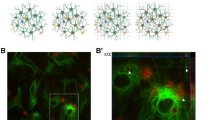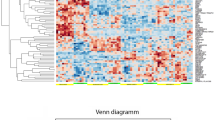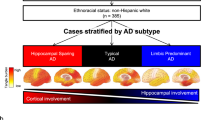Abstract
Transforming growth factor-β (TGF-β) signalling controls a number of cerebral functions and dysfunctions including synaptogenesis, amyloid-β accumulation, apoptosis and excitotoxicity. Using cultured cortical neurons prepared from either wild type or transgenic mice overexpressing a TGF-β-responsive luciferase reporter gene (SBE-Luc), we demonstrated a progressive loss of TGF-β signalling during neuronal maturation and survival. Moreover, we showed that neurons exhibit increasing amounts of the serine protease HtrA1 (high temperature responsive antigen 1) and corresponding cleavage products during both in vitro neuronal maturation and brain development. In parallel of its ability to promote degradation of TGF-β1, we demonstrated that blockage of the proteolytic activity of HtrA1 leads to a restoration of TGF-β signalling, subsequent overexpression of the serpin type -1 plasminogen activator inhibitor (PAI-1) and neuronal death. Altogether, we propose that the balance between HtrA1 and TGF-β could be one of the critical events controlling both neuronal maturation and developmental survival.
Similar content being viewed by others
Log in or create a free account to read this content
Gain free access to this article, as well as selected content from this journal and more on nature.com
or
Accession codes
Abbreviations
- HtrA:
-
high temperature responsive antigen
References
Packard M, Mathew D, Budnik V . Wnts and TGF beta in synaptogenesis: old friends signalling at new places. Nat Rev Neurosci 2003; 4: 113–120.
Zhu Y, Culmsee C, Klumpp S, Krieglstein J . Neuroprotection by transforming growth factor-beta1 involves activation of nuclear factor-kappaB through phosphatidylinositol-3-OH kinase/Akt and mitogen-activated protein kinase-extracellular-signal regulated kinase1,2 signaling pathways. Neuroscience 2004; 123: 897–906.
Zhu Y, Ahlemeyer B, Bauerbach E, Krieglstein J . TGF-beta1 inhibits caspase-3 activation and neuronal apoptosis in rat hippocampal cultures. Neurochem Int 2001; 38: 227–235.
Docagne F, Nicole O, Gabriel C, Fernández-Monreal M, Lesné S, Ali C et al. Smad3-dependent induction of plasminogen activator inhibitor-1 in astrocytes mediates neuroprotective activity of transforming growth factor-beta 1 against NMDA-induced necrosis. Mol Cell Neurosci 2002; 21: 634–644.
Lesné S, Docagne F, Gabriel C, Liot G, Lahiri DK, Buée L et al. Transforming growth factor-beta 1 potentiates amyloid-beta generation in astrocytes and in transgenic mice. J Biol Chem 2003; 278: 18408–18418.
Itoh S, ten Dijke P . Negative regulation of TGF-beta receptor/Smad signal transduction. Curr Opin Cell Biol 2007; 19: 176–184.
Izzi L, Attisano L . Regulation of the TGFbeta signalling pathway by ubiquitin-mediated degradation. Oncogene 2004; 23: 2071–2078.
Pallen MJ, Wren BW . The HtrA family of serine proteases. Mol Microbiol 1997; 26: 209–221.
Spiess C, Beil A, Ehrmann M . A temperature-dependent switch from chaperone to protease in a widely conserved heat shock protein. Cell 1999; 97: 339–347.
Hu SI, Carozza M, Klein M, Nantermet P, Luk D, Crowl RM . Human HtrA, an evolutionarily conserved serine protease identified as a differentially expressed gene product in osteoarthritic cartilage. J Biol Chem 1998; 273: 34406–34412.
Gray CW, Ward RV, Karran E, Turconi S, Rowles A, Viglienghi D et al. Characterization of human HtrA2, a novel serine protease involved in the mammalian cellular stress response. Eur J Biochem 2000; 267: 5699–5710.
Li W, Srinivasula SM, Chai J, Li P, Wu JW, Zhang Z et al. Structural insights into the pro-apoptotic function of mitochondrial serine protease HtrA2/Omi. Nat Struct Biol 2002; 9: 436–441.
De Luca A, De Falco M, Severino A, Campioni M, Santini D, Baldi F et al. Distribution of the serine protease HtrA1 in normal human tissues. J Histochem Cytochem 2003; 51: 1279–1284.
Baldi A, De Luca A, Morini M, Battista T, Felsani A, Baldi F et al. The HtrA1 serine protease is down-regulated during human melanoma progression and represses growth of metastatic melanoma cells. Oncogene 2002; 21: 6684–6688.
Grau S, Baldi A, Bussani R, Tian X, Stefanescu R, Przybylski M et al. Implications of the serine protease HtrA1 in amyloid precursor protein processing. Proc Natl Acad Sci USA 2005; 102: 6021–6026.
De Luca A, De Falco M, Fedele V, Cobellis L, Mastrogiacomo A, Laforgia V et al. The serine protease HtrA1 is upregulated in the human placenta during pregnancy. J Histochem Cytochem 2004; 52: 885–892.
Yang Z, Camp NJ, Sun H, Tong Z, Gibbs D, Cameron DJ et al. A variant of the HTRA1 gene increases susceptibility to age-related macular degeneration. Science 2006; 314: 992–993.
Tocharus J, Tsuchiya A, Kajikawa M, Ueta Y, Oka C, Kawaichi M . Developmentally regulated expression of mouse HtrA3 and its role as an inhibitor of TGF-beta signaling. Dev Growth Differ 2004; 46: 257–274.
Oka C, Tsujimoto R, Kajikawa M, Koshiba-Takeuchi K, Ina J, Yano M et al. HtrA1 serine protease inhibits signaling mediated by Tgf beta family proteins. Development 2004; 131: 041–053.
Kato MV, Sato H, Tsukada T, Ikawa Y, Aizawa S, Nagayoshi M . A follistatin-like gene, mac25, may act as a growth suppressor of osteosarcoma cells. Oncogene 1996; 12: 1361–1364.
Krieglstein K, Strelau J, Schober A, Sullivan A, Unsicker K . TGF-beta and the regulation of neuron survival and death. J Physiol Paris 2002; 96: 25–30.
Melloni Jr RH, DeGennaro LJ . Temporal onset of synapsin I gene expression coincides with neuronal differentiation during the development of the nervous system. J Comp Neurol 1994; 342: 449–462.
Sans N, Petralia RS, Wang YX, Blahos II J, Hell JW, Wenthold RJ . A developmental change in NMDA receptor-associated proteins at hippocampal synapses. J Neurosci 2000; 20: 1260–1271.
Lin AH, Luo J, Mondshein LH, ten Dijke P, Vivien D, Contag CH et al. Global analysis of Smad2/3-dependent TGF-beta signaling in living mice reveals prominent tissue-specific responses to injury. J Immunol 2005; 175: 547–554.
Docagne F, Nicole O, Marti HH, MacKenzie ET, Buisson A, Vivien D . Transforming growth factor-beta1 as a regulator of the serpins/t-PA axis in cerebral ischemia. FASEB J 1999; 13: 1315–1324.
Chien J, Aletti G, Baldi A, Catalano V, Muretto P, Keeney GL et al. Serine protease HtrA1 modulates chemotherapy-induced cytotoxicity. J Clin Invest 2006; 116: 1994–2004.
Grau S, Richards PJ, Kerr B, Hughes C, Caterson B, Williams AS et al. The role of human HtrA1 in arthritic disease. J Biol Chem 2006; 281: 6124–6129.
Massagué J . How cells read TGF-beta signals. Nat Rev Mol Cell Biol 2000; 1: 169–178.
Vivien D, Ali C . Transforming growth factor-beta signalling in brain disorders. Cytokine Growth Factor Rev 2006; 17: 121–128.
Brionne TC, Tesseur I, Masliah E, Wyss-Coray T . Loss of TGF-beta 1 leads to increased neuronal cell death and microgliosis in mouse brain. Neuron 2003; 40: 1133–1145.
De Servi B, La Porta CA, Bontempelli M, Comolli R . Decrease of TGF-beta1 plasma levels and increase of nitric oxide synthase activity in leukocytes as potential biomarkers of Alzheimer′s disease. Exp Gerontol 2002; 37: 813–821.
Rodríguez-Rodríguez E, Sánchez-Juan P, Mateo I, Llorca J, Infante J, García-Gorostiaga I et al. Serum levels and genetic variation of TGF-beta1 are not associated with Alzheimer's disease. Acta Neurol Scand 2007; 116: 409–412.
Tesseur I, Zou K, Esposito L, Bard F, Berber E, Can JV et al. Deficiency in neuronal TGF-beta signaling promotes neurodegeneration and Alzheimer's pathology. J Clin Invest 2006; 116: 3060–3069.
Wyss-Coray T, Lin C, Yan F, Yu GQ, Rohde M, McConlogue L et al. TGF-beta1 promotes microglial amyloid-beta clearance and reduces plaque burden in transgenic mice. Nat Med 2001; 7: 612–618.
Bruno V, Battaglia G, Casabona G, Copani A, Caciagli F, Nicoletti F . Neuroprotection by glial metabotropic glutamate receptors is mediated by transforming growth factor-beta. J Neurosci 1998; 18: 9594–9600.
Seeds NW, Basham ME, Ferguson JE . Absence of tissue plasminogen activator gene or activity impairs mouse cerebellar motor learning. J Neurosci 2003; 23: 7368–7375.
Nicole O, Docagne F, Ali C, Margaill I, Carmeliet P, MacKenzie ET et al. The proteolytic activity of tissue-plasminogen activator enhances NMDA receptor-mediated signaling. Nat Med 2001; 7: 59–64.
Murwantoko, Yano M, Ueta Y, Murasaki A, Kanda H, Oka C et al. Binding of proteins to the PDZ domain regulates proteolytic activity of HtrA1 serine protease. Biochem J 2004; 381: 895–904.
Dennler S, Itoh S, Vivien D, ten Dijke P, Huet S, Gauthier JM . Direct binding of Smad3 and Smad4 to critical TGF beta-inducible elements in the promoter of human plasminogen activator inhibitor-type 1 gene. EMBO J 1998; 17: 3091–3100.
Rose K, Goldberg MP, Choi DW . Cytotoxicity in murine cortical cell culture. In: Tyson CA, Frazier JM (eds) In Vitro Biological Methods. San Diego, California, USA: Academic Press, 1993.
Sappino AP, Madani R, Huarte J, Belin D, Kiss JZ, Wohlwend A et al. Extracellular proteolysis in the adult murine brain. J Clin Invest 1993; 92: 679–685.
Acknowledgements
We thank Pr Tony Wyss Coray for providing us the SBE-Luc transgenic mice, Benoit Roussel for his help in microarray data submission and Dr Carine Ali for her scientific assistance. We are grateful to Novartis for the generous gift of HtrA1 inhibitor: NVP-LBG976. This work was supported by a CIFRE grant from ANRT (National Association for Technical Research) and from Cellial Technologies.
Author information
Authors and Affiliations
Corresponding author
Additional information
Edited by N Bazan
Supplementary Information accompanies the paper on Cell Death and Differentiation website (http://www.nature.com/cdd)
Supplementary information
Rights and permissions
About this article
Cite this article
Launay, S., Maubert, E., Lebeurrier, N. et al. HtrA1-dependent proteolysis of TGF-β controls both neuronal maturation and developmental survival. Cell Death Differ 15, 1408–1416 (2008). https://doi.org/10.1038/cdd.2008.82
Received:
Revised:
Accepted:
Published:
Issue date:
DOI: https://doi.org/10.1038/cdd.2008.82
Keywords
This article is cited by
-
Lysyl oxidases: linking structures and immunity in the tumor microenvironment
Cancer Immunology, Immunotherapy (2020)
-
Protease Nexin I is a feedback regulator of EGF/PKC/MAPK/EGR1 signaling in breast cancer cells metastasis and stemness
Cell Death & Disease (2019)
-
Lysyl oxidase drives tumour progression by trapping EGF receptors at the cell surface
Nature Communications (2017)
-
Macrophage migration inhibitory factor (MIF) modulates trophic signaling through interaction with serine protease HTRA1
Cellular and Molecular Life Sciences (2017)
-
Genetic factors in cerebral small vessel disease and their impact on stroke and dementia
Journal of Cerebral Blood Flow & Metabolism (2016)



